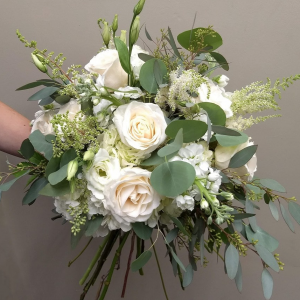Building upon the foundational understanding of how atmosphere influences nightlife as discussed in The Evolution of Atmosphere in Nightlife and Its Cultural Impact, we now delve into the pivotal role that lighting design plays in shaping the unique identities and experiences within nightlife venues. Lighting is not merely functional but a powerful artistic and cultural tool that molds the ambiance, reflects societal values, and influences social interactions in nightlife environments.
1. The Role of Lighting in Shaping Nightlife Atmospheres
a. How lighting influences the mood and emotional responses of patrons
Lighting profoundly affects emotional perception in nightlife spaces. Warm, dim lighting often fosters intimacy and relaxation, making venues like jazz lounges or wine bars feel cozy and inviting. Conversely, bright, dynamic lighting energizes patrons, creating excitement at dance clubs or festivals. A striking example is the use of pulsating strobe lights in electronic dance music (EDM) clubs, which synchronize with music beats to amplify adrenaline and communal euphoria. According to research published in the Journal of Environmental Psychology, lighting can trigger emotional responses by activating specific neural pathways, thus shaping the overall atmosphere.
b. The relationship between lighting intensity, color, and cultural expression
Lighting intensity and color are deliberate tools for cultural storytelling within nightlife venues. For example, vibrant reds and golds dominate traditional Asian festivals, emphasizing warmth, prosperity, and celebration. In contrast, cool blues and purples are often associated with modern, futuristic themes, as seen in techno clubs across Europe. The use of colored lighting can also reflect societal values; for instance, green lighting in eco-conscious venues signals sustainability and harmony with nature. These choices are rooted in cultural symbolism—red for luck in Chinese culture, white for purity in Western traditions—highlighting lighting’s role as a form of visual language.
c. Examples of iconic lighting setups that define nightlife venues
Iconic venues such as the Studio 54 in New York became legendary partly due to their groundbreaking lighting schemes—pink, purple, and gold hues combined with reflective surfaces created a glamorous, otherworldly atmosphere. Similarly, the Berghain club in Berlin employs minimalistic, stark lighting to cultivate a sense of mystery and exclusivity. These setups not only create memorable environments but also become integral to the venue’s brand identity, influencing how patrons perceive and remember their experience.
2. Historical Perspectives: From Functional to Artistic Lighting in Nightlife
a. Evolution of lighting technology and its impact on nightlife design
Initially, nightlife lighting was purely functional—basic illumination aimed at safety and visibility. The advent of incandescent bulbs in the late 19th century allowed for warmer ambiance, while neon lighting in the early 20th century revolutionized signage and venue aesthetics. The development of LED technology in the 2000s further transformed nightlife design, enabling precise control over color, intensity, and patterns, thus opening new creative possibilities. LED’s energy efficiency and programmability have made immersive and dynamic lighting an industry standard, facilitating the creation of atmospheres that can adapt in real-time to music and crowd movements.
b. Cultural shifts reflected in lighting trends over decades
Lighting trends mirror broader cultural changes. The psychedelic lighting of the 1960s, characterized by swirling colors and kaleidoscopic patterns, reflected the era’s experimentation and social upheaval. The minimalist, sleek lighting of the 1980s and 1990s, influenced by corporate aesthetics, emphasized sophistication and modernity. Today, there’s a trend towards eco-friendly and sustainable lighting solutions, reflecting growing environmental consciousness. The shift from purely decorative to experiential lighting underscores how cultural values influence design choices in nightlife.
c. Case studies: transformation of famous venues through lighting innovations
The transformation of the Moulin Rouge in Paris exemplifies how lighting can rejuvenate a historic venue. Over decades, lighting upgrades have balanced ornate architecture with modern LED effects, merging tradition with innovation. Similarly, the transformation of Fabric London involved integrating programmable LED fixtures that adapt to live performances, creating immersive experiences that redefine the club’s cultural identity. These case studies demonstrate how lighting innovations can revitalize heritage venues, making them relevant for contemporary audiences.
3. Cultural Significance of Lighting Styles in Nightlife
a. How different cultures utilize lighting to convey identity and tradition
Cultural identities are often expressed through lighting. In India, Diwali celebrations feature vibrant, colorful lighting displays symbolizing joy and prosperity. In Middle Eastern cultures, intricate lanterns and warm lighting evoke hospitality and tradition. In Japan, lantern festivals use soft, paper lanterns that embody simplicity and spiritual harmony. These examples highlight how lighting serves as a cultural marker, reinforcing identity and shared heritage within nightlife contexts.
b. The role of lighting in rituals, celebrations, and social norms within nightlife
Lighting plays a central role in rituals and celebrations, shaping social norms and behaviors. For instance, the use of colorful lighting during Carnival in Brazil enhances the festive atmosphere, encouraging social interaction and communal participation. Conversely, subdued lighting during memorial events fosters respect and reflection. In nightlife, lighting can guide behavior—bright and energetic in dance floors, subdued and intimate in lounges—thus influencing social dynamics according to cultural expectations.
c. Cross-cultural comparisons: lighting as a cultural language in nightlife
Comparing global nightlife scenes reveals how lighting functions as a universal yet culturally specific language. In Ibiza, neon and strobe lights symbolize freedom and hedonism, while in Bali, soft, warm lighting reflects spiritual harmony and community. Recognizing these differences helps venue designers tailor lighting schemes that resonate culturally, fostering authentic experiences and cross-cultural understanding within diverse nightlife environments.
4. Psychological and Social Effects of Lighting Design on Nightlife Communities
a. How lighting fosters social interaction and community bonding
Effective lighting creates environments conducive to socializing. Warm, inviting lighting in lounges encourages patrons to linger and converse, fostering community bonds. Dynamic lighting that reacts to music or crowd movement can energize groups, promoting shared experiences. For example, the use of interactive LED walls in modern clubs invites patrons to participate actively, strengthening social cohesion through immersive engagement.
b. The influence of lighting on perceptions of safety and inclusivity
Lighting significantly impacts how safe and inclusive a nightlife space feels. Well-lit entrances and dance floors reduce perceived risks, encouraging diverse participation. Conversely, overly dark or poorly lit areas may foster discomfort or exclusion, especially for marginalized groups. Progressive venues now employ strategic lighting to highlight inclusivity, such as color schemes and placement that promote visibility and approachability for all patrons.
c. Lighting as a tool for shaping behavioral norms and experiences
Lighting can subtly guide behavior—bright, high-energy lighting cues patrons to dance or socialize, while softer lighting encourages relaxation. Some venues use lighting to demarcate zones with different norms, such as quiet lounge areas versus lively dance floors. This strategic use of lighting influences experiences and behavioral expectations, aligning physical environment with desired social outcomes.
5. Technological Advances and Creative Innovations in Lighting Design
a. Integration of smart lighting, LED technology, and programmable systems
Modern lighting design leverages smart technology—LEDs, DMX controllers, and IoT integrations—to create adaptable environments. Programmable lighting systems can synchronize with music, react to crowd density, or change dynamically based on event themes. This flexibility allows venues to craft tailored atmospheres, enhancing the experiential quality of nightlife.
b. The rise of immersive lighting experiences and multimedia integration
The advent of multimedia integration—projection mapping, holography, and interactive displays—pushes the boundaries of lighting design. Clubs and festivals now incorporate immersive visuals that envelop patrons, blurring the line between environment and performance. These innovations foster unforgettable experiences, solidifying a venue’s cultural relevance and appeal.
c. Future trends: sustainability, interactivity, and personalized lighting environments
Looking ahead, sustainable lighting solutions utilizing energy-efficient LEDs and solar power are gaining prominence, aligning nightlife with ecological values. Interactivity—via mobile apps or wearable devices—enables patrons to customize their lighting experience, fostering a sense of agency and personalization. These trends suggest a future where lighting not only enhances aesthetics but also embodies social responsibility and individual expression within nightlife cultures.
6. The Intersection of Lighting Design and Venue Identity
a. How lighting differentiates brands and creates memorable identities
Distinctive lighting schemes serve as visual signatures, making venues instantly recognizable. For instance, the iconic red lighting in the Ministry of Sound in London reinforces its brand of energetic, cutting-edge music. Custom lighting becomes a key component of branding, creating emotional associations that patrons carry beyond their visit.
b. Custom lighting as a form of artistic expression and branding strategy
Many venues collaborate with lighting artists to develop unique visual identities—think of the holographic projections at the Hong Kong nightclub, or the thematic lighting in Ibiza’s superclubs. Such creative endeavors elevate the venue from mere space to an artistic statement, reinforcing its cultural narrative and attracting targeted audiences.
c. Case examples of venues that leverage lighting to reinforce cultural themes
The Opium nightclub in Shanghai employs traditional Chinese motifs through subtle lighting accents, blending cultural heritage with modern nightlife. Similarly, the Afrika Shrine in Nigeria uses vibrant, colorful lighting to emphasize its Afrobeat roots, creating a lively, culturally resonant environment. These examples demonstrate how lighting can underpin a venue’s cultural identity and appeal to specific communities.
7. Transition: How Lighting Design Continues to Evolve and Influence Nightlife Cultures
a. The ongoing impact of innovative lighting on cultural perceptions of nightlife
As technology advances, lighting continues to redefine nightlife perceptions—transforming venues into immersive, culturally expressive environments. The integration of AI-driven lighting and interactive multimedia will further deepen this impact, fostering nightlife scenes that are more inclusive, sustainable, and artistically vibrant.
b. Connecting lighting trends back to the broader evolution of atmosphere and culture
Lighting is an extension of the broader cultural shifts discussed in the parent article. It reflects societal values, technological progress, and artistic innovation. As nightlife evolves from functional spaces to cultural hubs, lighting design remains a crucial element that shapes perceptions and experiences across diverse communities.
c. Reflection on the cyclical nature of lighting aesthetics and cultural adaptation
Throughout history, lighting aesthetics have cycled between minimalism and extravagance, mirroring societal moods and technological capacities. Future innovations will likely continue this cycle, adapting to cultural needs and technological possibilities, ensuring that lighting remains a dynamic and integral component of nightlife evolution.




